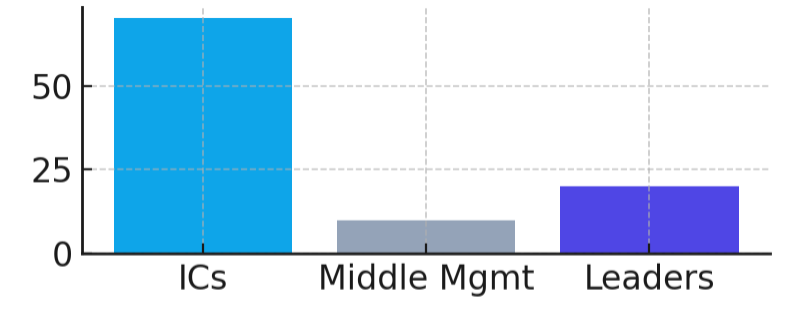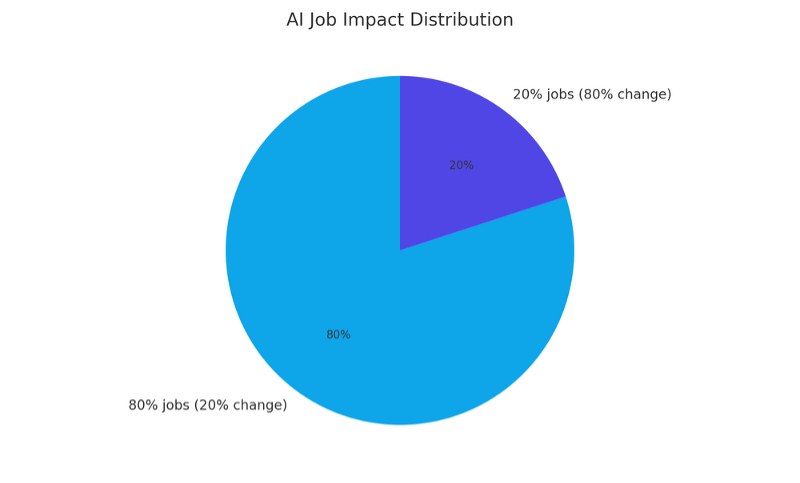Rewiring the Enterprise: How AI Is Turning Traditional Org Charts Upside Down
AI isn’t just a new toolset—it’s a new organizational architecture. Leaders across industries are moving from hierarchy-heavy org charts to leaner, flatter “barbell” structures: many more individual contributors (ICs) on one end, a smaller cadre of leaders with broader spans of control on the other, and fewer layers in between.
Key Highlights:
“We’re going to have to rewire the whole company.” —Sastry Durvasula, TIAA
~80% of jobs will change by at least 20%, and ~20% of jobs will change as much as 80%
Senior leaders managing far more direct reports (e.g., Nvidia’s Jensen Huang >50)
Moderna merging Tech + HR into a single function for “work planning”
Orgs increasingly weighing engineers vs. GPUs as structural investment decisions
1. What’s Changing: From Pyramids to Barbells
Organizations are shifting from hierarchical pyramids to barbell-shaped structures with more ICs and fewer middle managers. Spans of control are expanding at the top, supported by AI-assisted workflows. Teams are becoming more multidisciplinary, organized into ad hoc pods that reconfigure around projects.
2. The Numbers: Scope of Work and Jobs Impacted
According to WSJ (TIAA’s Sastry Durvasula):
~80% of jobs will see ~20% of work content change due to AI.
~20% of jobs will see ~80% of work content change—deep redesign or reinvention.
This means:
- Task-level rewiring is universal.
- Role-level rewiring is material, with some roles shrinking or transforming dramatically.
3. Practical Implications Across Functions
4. A Pragmatic Roadmap (6–12 Months)
Phase 1: Map workflows and define AI-able tasks (0–8 weeks)
Phase 2: Stand up cross-functional pods (6–12 weeks)
Phase 3: Re-scope management layers (8–16 weeks)
Phase 4: Scale and institutionalize (months 4–12)
Source: Wall Street Journal, “AI Is Turning Traditional Corporate Org Charts Upside Down,” Sept. 16, 2025 (Bousquette, Rosenbush)



